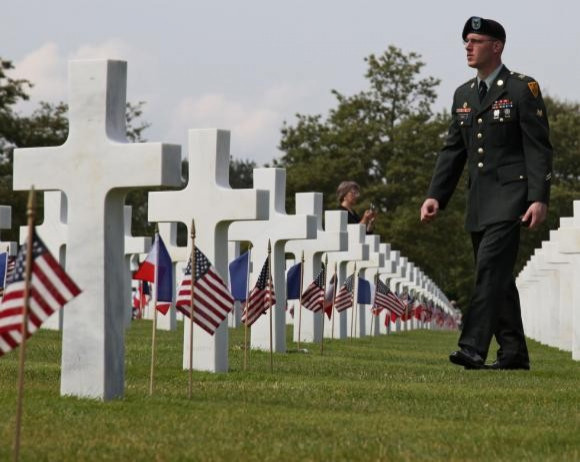What Was D-Day?

This Monday, June 6, will be the 67th anniversary of the most decisive battle of World War II which finally turned the tide against Nazi Germany and ultimately paved the way for an Allied Victory in the European Theatre.
As early as 1942, Joseph Stalin, the leader of the Soviet Union had demanded US President Franklin D. Roosevelt and British Prime Minister Winston Churchill launch a land attack on European soil in order the relieve the Russian army of fighting the Germans on the eastern front. Stalin feared that the Allies (particularly Churchill) were delaying such an invasion from the west because they hoped the Russians and Germany would fight each other to death in the east,
By the middle of 1944, Britain had already been fighting the war for almost five costly, exhausting years; and France had already fallen to the Third Reich. However, the Americans, who joined the war only two-and-a-half years prior, had millions of well-trained, fresh soldiers available for an attack on the Germans. US munitions factories were also producing a steady stream of military supplies. Strategic bombing of Germany was already underway in 1943.
Military strategists decided the best way to weaken the German army in France was to land on the beaches of northwestern France east of the Cherbourg Peninsula. For three months prior to D-Day, allied bombers destroyed French and Belgian railways, airways and bridges in order to cripple the Germany army’s mobility.
By early June 1944, the British and Americans were preparing the largest amphibious attack and invasion in history.
Supreme Allied Commander (and future U.S. President) General Dwight D. Eisenhower decided to launch the attack on June 6.
While the Germans were fully expecting such an attack, they were deceived into thinking it would occur further to the northeast.
That morning, after an intense air and naval bombardment, waves and waves of thousands of American, British and Canadian troops assaulted the beaches at five different locations on the Normandy coast. An incredible 5,000 ships and 4,000 ship-to-shore sea vessels were used in the epic landings.
By nightfall of that first day, following a brutal firefight and many casualties on both sides, the Allies gained a solid foothold in Nazi-controlled Europe.
A total of about 156,000 Allied forces participated in the operation over a few days – the American contingent alone suffered more than 10,000 deaths; with thousands more missing.
Total German casualties are not known. In addition, thousands of French civilians died from the relentless Allied bombing prior to and during the invasion.
Thereafter, the Allies secured the beach and moved slowly into the interior, supported by superior manpower and air cover.
The Allies reached Paris and liberated the city – but at a very price, at least 200,000 Allied troops had either died, became wounded or missing by then.
By that point, the Allies had the momentum, Germany was weakening on both the western and eastern fronts, and within a year lost the war.
© Copyright IBTimes 2024. All rights reserved.





















